Who Really Runs Innovation? Nike, Satisfy, and the Creative Crossroads
Exploring the Nike-Satisfy Design Controversy and Its Implications for Innovation, Creativity, and the Future of Running Gear
A recent controversy involving Nike and Satisfy has sparked debate within the running community about innovation, authenticity, and the power dynamics between major brands and smaller players. Nike’s latest running shirt bears a striking resemblance to Satisfy’s MothTech™ gear, a flagship design from the boutique running brand known for its cutting-edge approach to apparel. While Nike has not addressed the allegations directly, the resemblance has led many to question the balance between influence and imitation in the sportswear industry.
MothTech™: The Spirit of Innovation
Satisfy’s MothTech™ line stands out as an example of how smaller brands are reshaping running culture. Designed with deliberately distressed fabric to enhance breathability and reduce weight, MothTech™ captures a raw, lived-in aesthetic that appeals to runners looking for more than just function. It is innovation paired with individuality, offering gear that speaks to the identity and ethos of a growing subculture.
For Satisfy, MothTech™ represents more than a product; it symbolizes the brand’s mission to push boundaries and challenge conventions. This makes the similarities between Nike’s new offering and Satisfy’s signature designs particularly significant. The debate is not only about design but also about what this moment means for smaller, innovation-driven companies in an industry dominated by global giants.
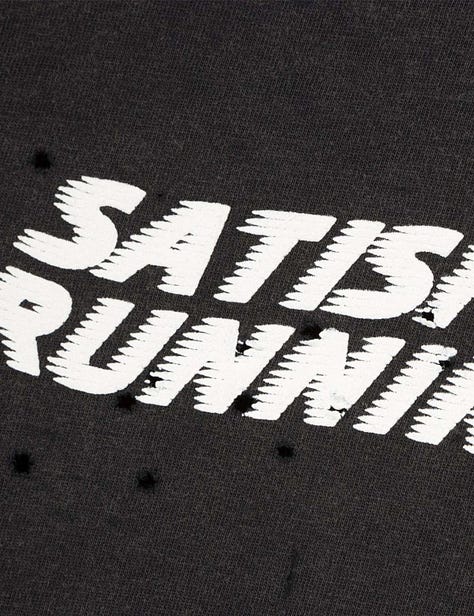

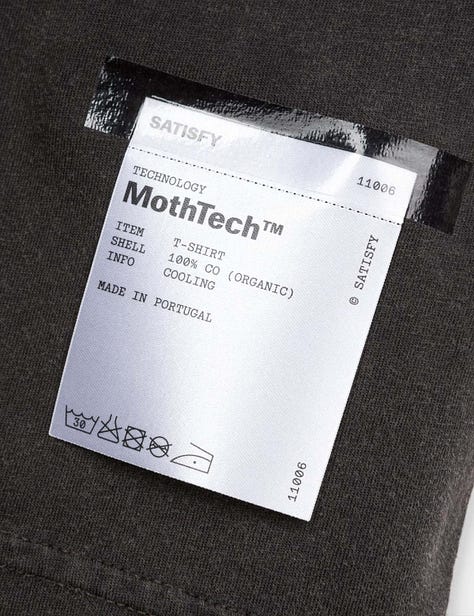
The Struggle Between Big and Small
The power imbalance between brands like Nike and companies such as Satisfy is nothing new. While Satisfy thrives on niche appeal and forward-thinking creativity, Nike has the resources and reach to amplify any trend it decides to adopt. This dynamic raises questions about whether smaller brands can protect their originality or if they risk having their innovations overshadowed by larger competitors.
However, this isn’t merely a question of intellectual property. For many, it strikes at the heart of running culture, where grassroots ideas and authenticity are increasingly celebrated. Small brands are often the drivers of change, introducing new technologies, designs, and philosophies that reinvigorate the sport. When larger corporations adapt—or replicate—these innovations, it can dilute their impact and undermine the ecosystem that made them possible in the first place.



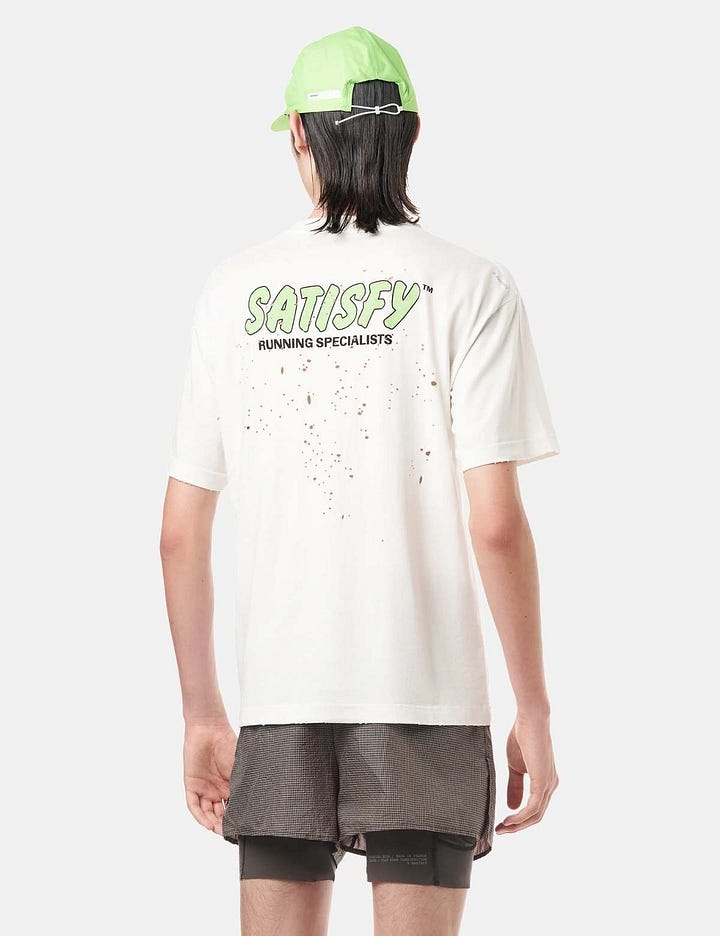
A Culture Worth Protecting
The rise of niche running brands like Satisfy reflects a shift in the way runners approach their sport. No longer content with mass-market gear, many runners seek products that align with their individuality and values. This has created a vibrant community that celebrates creativity, self-expression, and a deeper connection to the sport.
The controversy between Nike and Satisfy highlights the delicate balance within this community. While Nike’s reach and influence can help spread ideas to a broader audience, it also risks overshadowing the voices of the innovators who bring those ideas to life. The challenge for the running culture is finding ways to support smaller brands and maintain the diversity of thought that fuels progress.
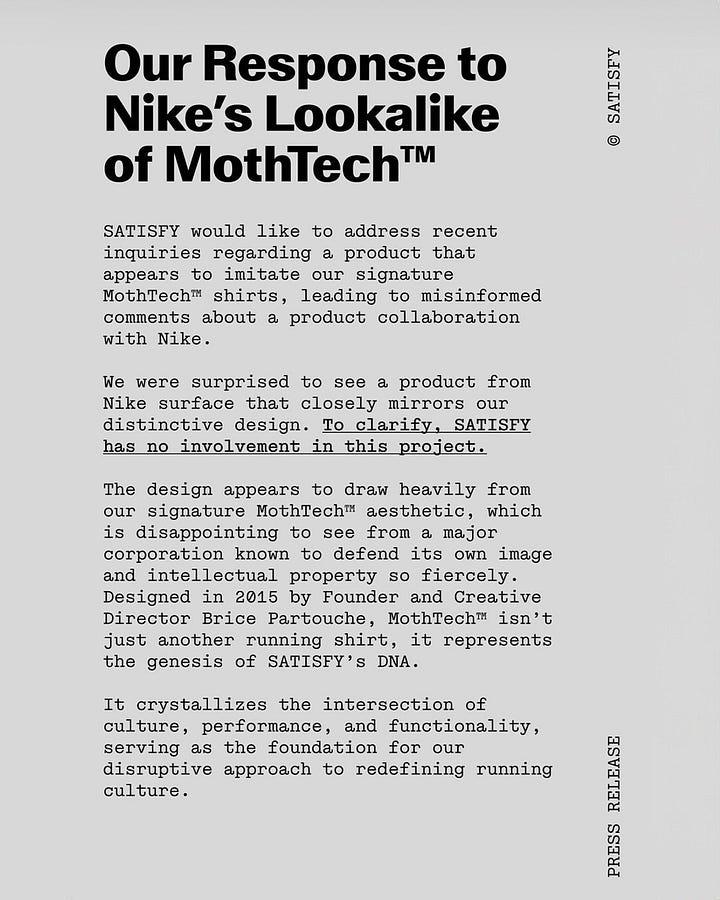
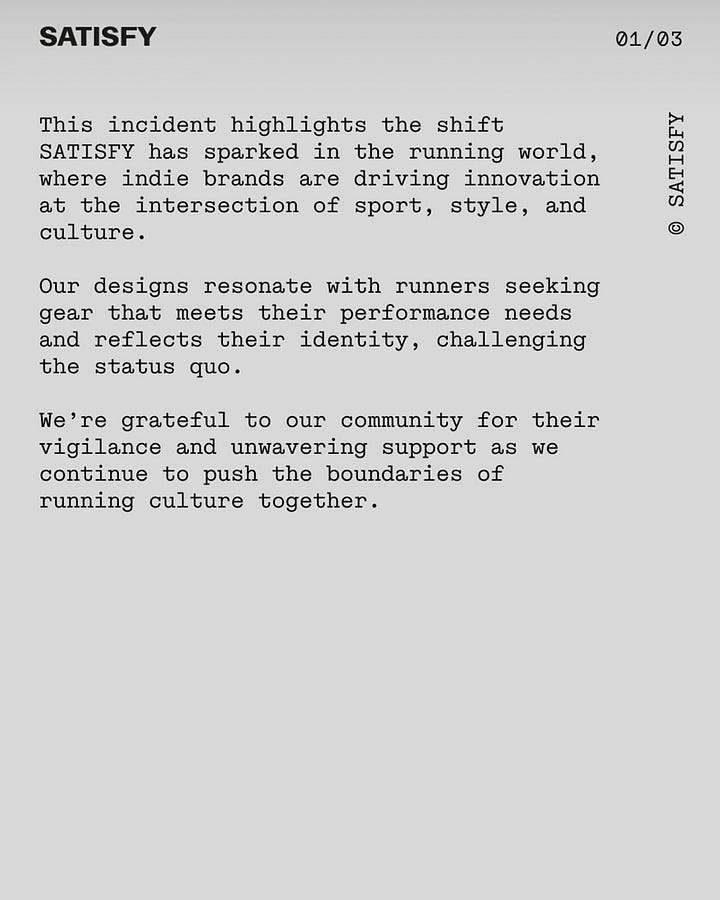
The Future of Running Innovation
The debate surrounding Nike and Satisfy serves as a reminder of the importance of fostering creativity and protecting originality within the running world. Smaller brands like Satisfy will likely need to continue innovating, leaning into their unique identities and rallying their communities to stand out in a crowded market.
At the same time, the running community faces a choice: support the pioneers who shape the culture or prioritize convenience and familiarity offered by larger companies. How this choice plays out will determine the future of running gear and the values that define the sport.
As the controversy unfolds, it underscores the tension between big brands and small innovators while highlighting the role of the running community in shaping the culture’s direction. At its core, this is not just a story about a shirt—it is a story about who gets to define the next chapter of running.
Thank you for reading! I intend to keep this newsletter free, but if you'd like to show your support, the best way is by sharing it with a friend.


